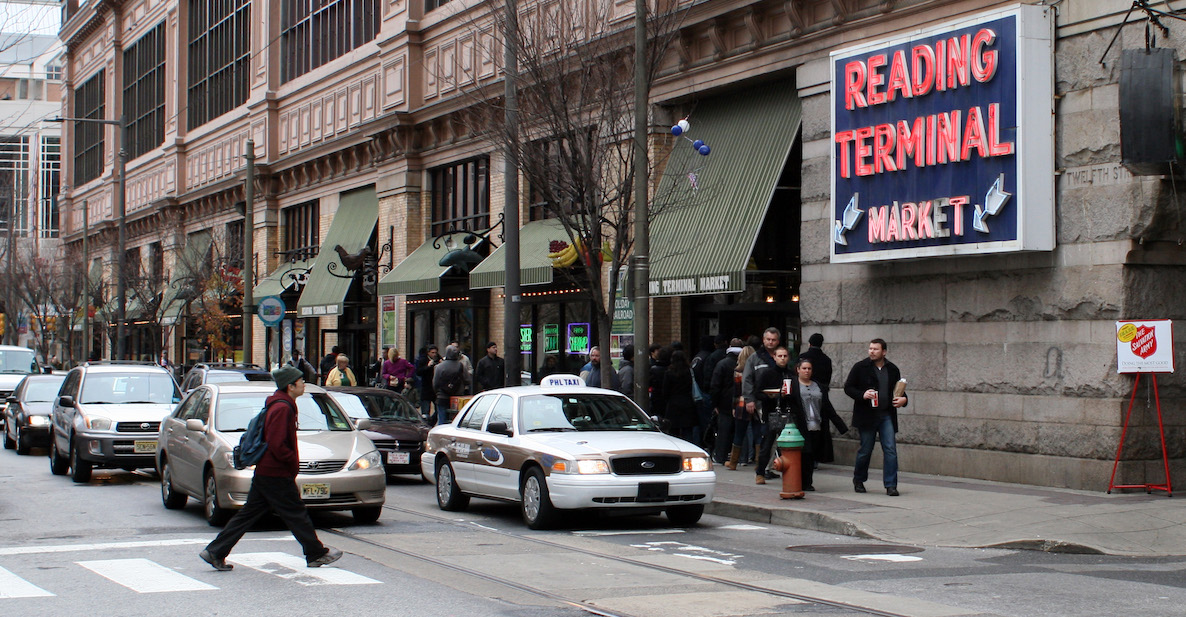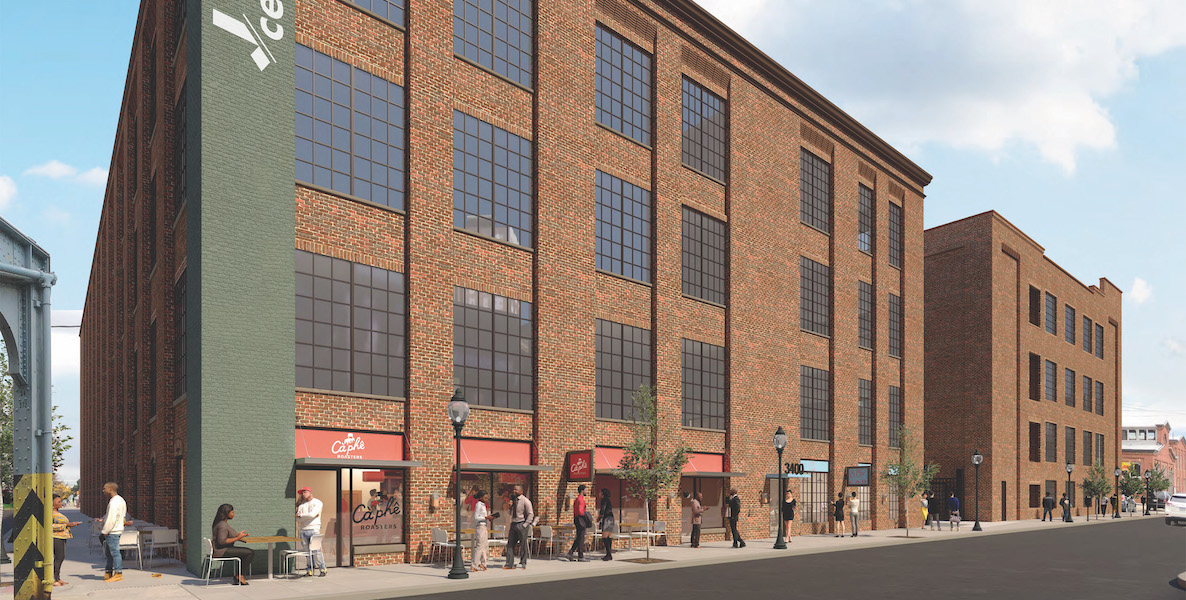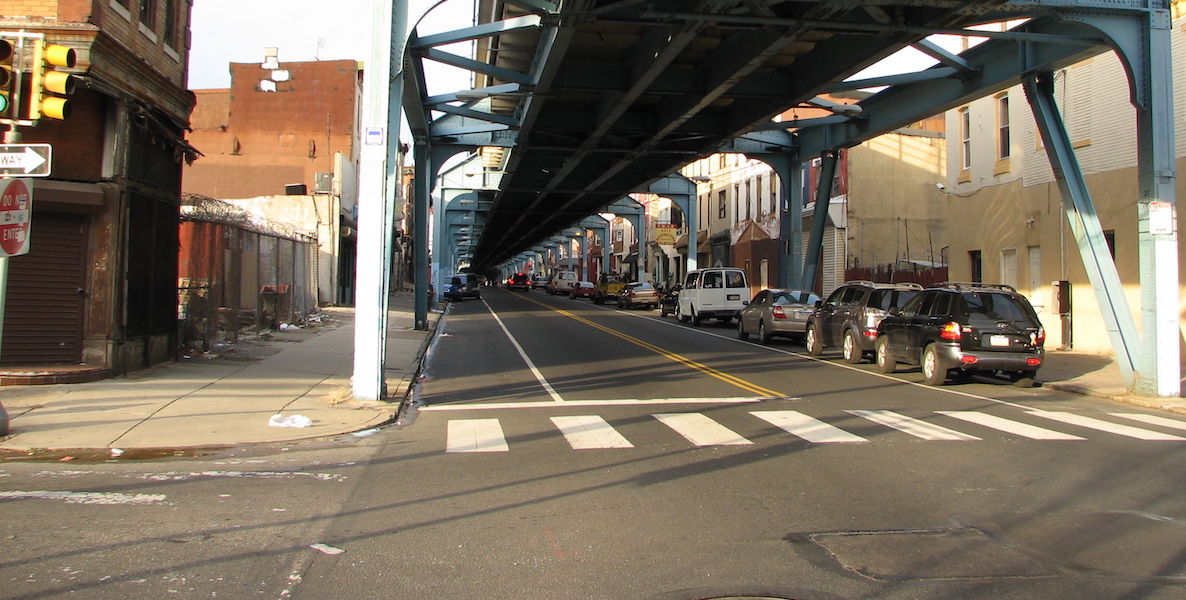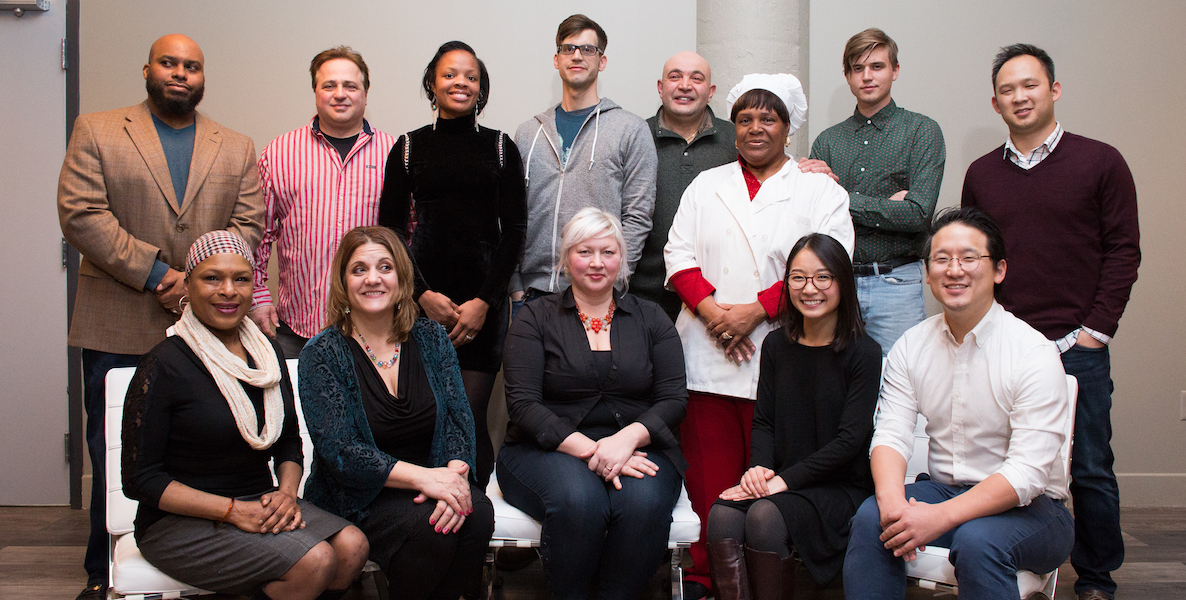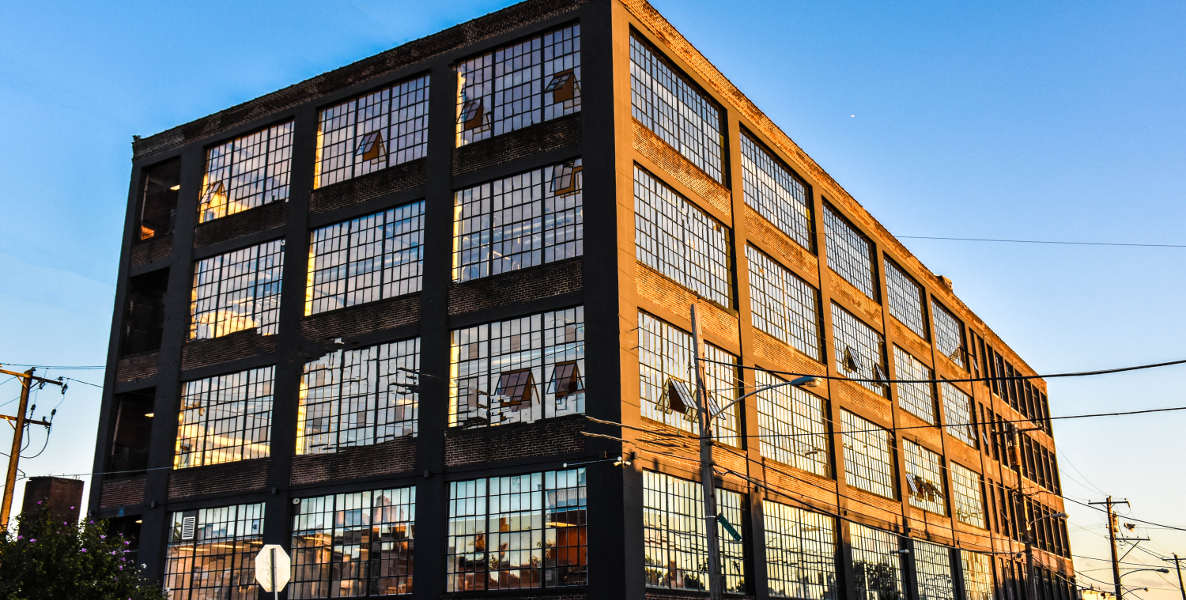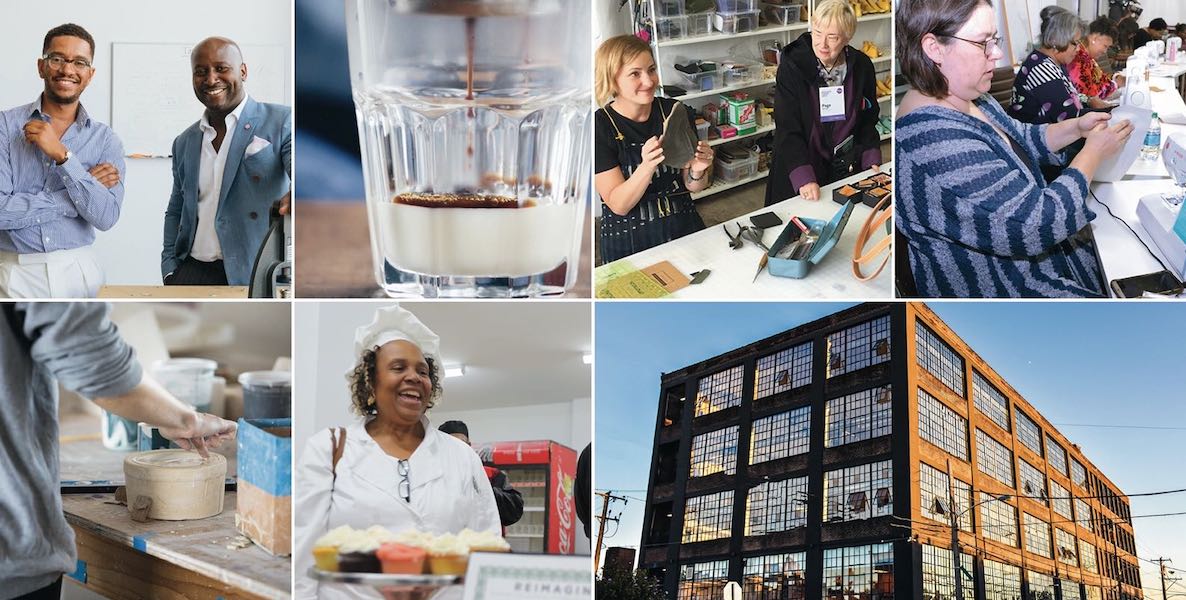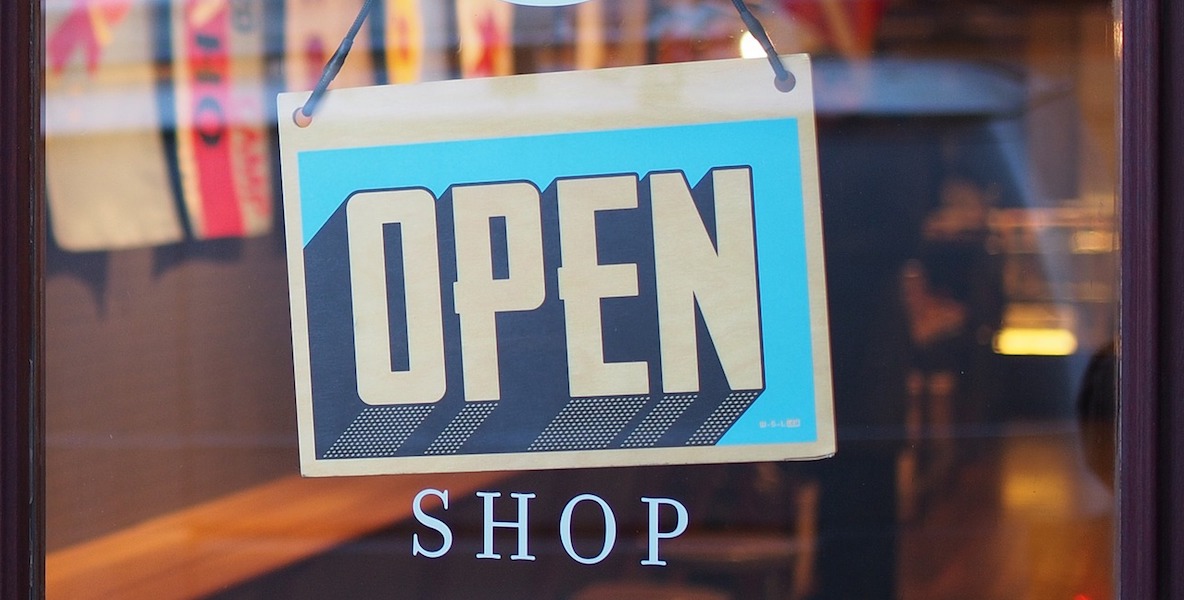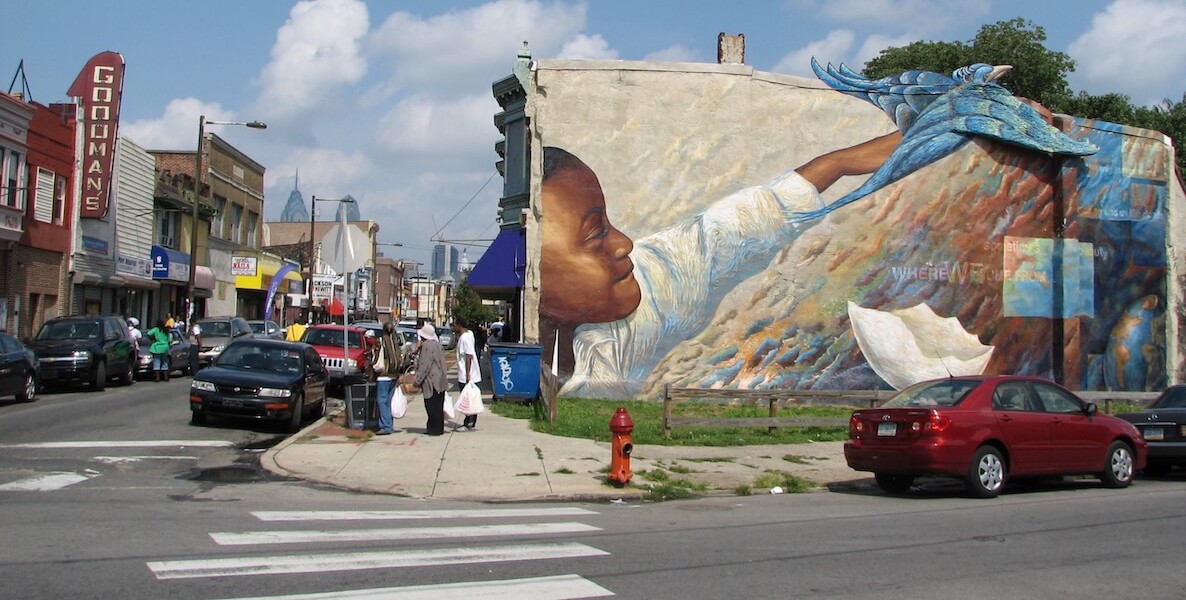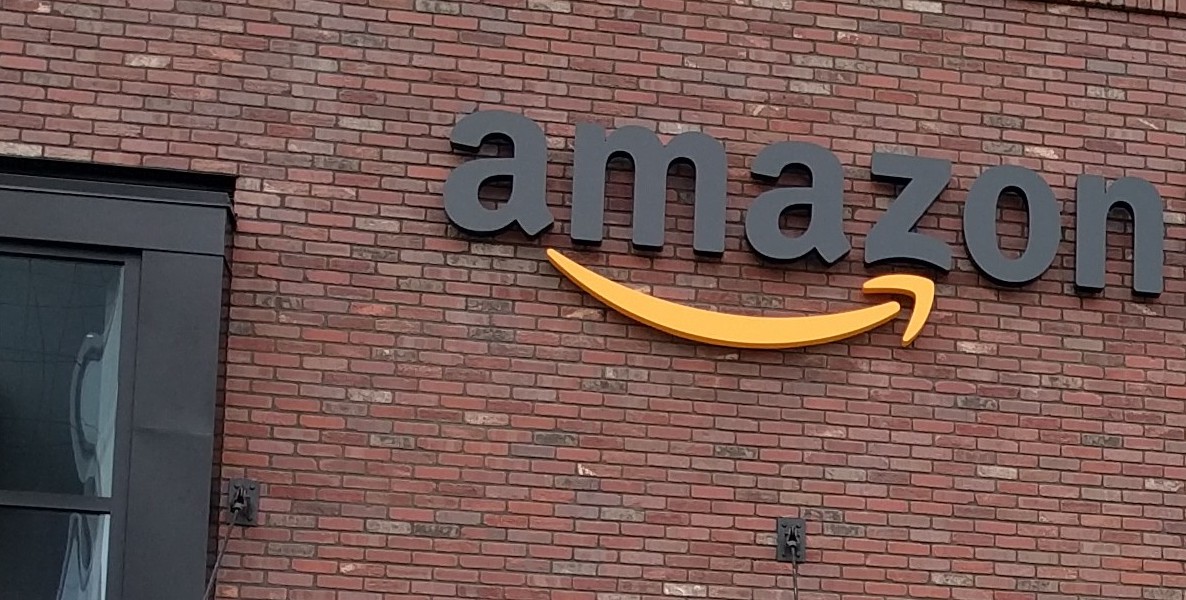In 2012, we at Shift Capital were on the verge of buying a large industrial property for next to nothing. The 120,000 square foot structure was built in 1920 to house a candy company, but now sat vacant—tantalizingly, just one block from a subway stop, a mere 10-minute ride from one of Philadelphia’s hottest downtown neighborhoods.
Our plan was to convert the building into spaces for makers and small businesses that would bring jobs into the Kensington community. With case studies and our own experience we could easily demonstrate significant market demand for affordable small business spaces. To us, as real-estate entrepreneurs and community developers, the deal seemed like a no-brainer.
However, we were in for a financing challenge that took us entirely by surprise.
Even with a low acquisition price, the banks we initially approached for financing were skeptical. Where we saw an underserved location ripe for development, filled with tenants who would bring vibrancy and diversity to the local economy, they saw only risk.
For bankers, what matters in real estate financing is not just the quality or the location of the real estate, but also the perceived strength of the tenants.
To the banks, our vision of a space dedicated to small businesses and artists spelled one thing: “non-credit” tenants, which is to say tenants who are a potential risk of not paying their rent because of a lack of corporate strength or rental history.
![]() It made our deal the very opposite of what today has become the ideal loan: a long-term lease to a large company like a global chain store—or at the very least, a big box store—the epitome of a safe bet.
It made our deal the very opposite of what today has become the ideal loan: a long-term lease to a large company like a global chain store—or at the very least, a big box store—the epitome of a safe bet.
Herein lies the myopia of our current real estate financing structure.
Banks’ total aversion to risk means that real estate investments that are underpinned by small businesses (which rely heavily on landlords to help finance their business needs) are largely being overlooked.
With banks looking elsewhere, investors follow suit by funneling capital into the usual real estate suspects—office buildings, industrial buildings, and multi-family projects.
Meanwhile, a huge investment and impact opportunity continues to be ignored by the traditional financing world, waiting for someone to take notice—driven by the enormous economic engine of small business.
Key Ingredient: The Small Business Engine
Small businesses are a powerful economic engine that society needs to support, finance and prioritize. Consider the following:
The small business sector isn’t small at all
It employs 47.5 percent of the private workforce in America, accounting for 58.9 million jobs. In addition, the small-business world is more robust for job gains in cities than the heavily financeable big-box retail market.
Since 2011, small businesses have accounted for two-thirds of net employment gains in the United States each year.
Small business owners of color are more likely to hire people of color
In addition, small businesses are more likely to hire people who might not fit the needs of larger corporations.
Consider Jose Tirado, a local Latino contractor who was provided an opportunity to start and grow his business through our work in Kensington.
Jose has hired nearly two dozen people over the last few years, the majority of whom are returning citizens and formerly addicted.
Many of these people from the neighborhood have limited opportunities to work![]() for larger corporations in Philadelphia. Such local job growth has an immediate economic effect in low-income neighborhoods.
for larger corporations in Philadelphia. Such local job growth has an immediate economic effect in low-income neighborhoods.
For these reasons, it’s in a city’s best interest to invest in a portfolio of small businesses rather than put all their eggs into the basket of one big business.
Yet a 2015 analysis of over 4,200 economic development incentive awards found that large companies received 70 percent of the deals and 90 percent of the dollars.
What’s more, 83 percent of entrepreneurs do not access bank loans or venture capital at the time of startup. With subsidy dollars flowing elsewhere and financing projects for small businesses becoming more challenging, is it surprising to discover U.S. entrepreneurship is at a near 40-year low?
The time is right to make small businesses a priority—and not just because it’s an untapped market for investors, but also because consumer demand continues to move towards high-quality, locally made products.
“Shop Small” campaigns, the success of craft makers on ETSY and the explosion of the local food movements have all been a counterpoint to the growth of behemoths like Amazon.
In addition, communities tend to prefer local businesses to corporate stand-ins, particularly in proud, closely knit communities like those in Philadelphia, where pride in Philly and in one’s neighborhood is an important part of one’s identity.
But if all that is the case, why is financing small businesses so damn hard?
Financing + Real Estate: The Banking & CDFI Dilemma
Since the 2008 financial crash, banks have found themselves under more scrutiny than ever after a self-generated housing crisis. Bankers, whose primary job is to mitigate risk, further tightened up their lending practices.
This would make sense, except that stricter guidelines had the negative consequence of raising the hurdle for new entrants and further entrenching the banking community in the deals they know best and are most comfortable with: “safe” deals in core parts of cities and traditional enclaves in the suburbs.
Banks’ fear of straying from that tried-and-true mold sidelined a huge swath of real estate entrepreneurs, especially young entrepreneurs interested in the impact of real estate with fresh ideas but limited capital and few connections, or people from less privileged backgrounds without pedigrees or long credit histories.
This created a stifling effect for investors who wanted to branch out from mainstream markets into underserved neighborhoods.
Even in those underserved communities, many Community Development Finance Institutions moved to a more conservative approach. CDFIs had long been the financing groups most responsible for funding challenging urban projects; they were the vanguard of investing where banks weren’t inclined to go.
But to improve their scale of lending—a noble pursuit—CDFIs began seeking ratings by the major credit agencies. That, in turn, increased their pressure to reduce delinquencies and defaults—and thus CDFIs also began moving towards “safer” real estate deals.
While this provided significant capital for charter schools, health clinics and anchor grocery stores, it left small businesses behind.
Ultimately, if the real estate underlying small business spaces—either maker spaces or storefronts—is not financeable by banks or the CDFI community, then we are limiting the opportunities for these small businesses to thrive and succeed in their own neighborhoods.
How Cities And Foundations Can Provide The Solution
Banks don’t yet recognize the potential of these small businesses—including those of artists and makers—but cities certainly should.
We’ve already seen the way Brooklyn’s recent resurgence was built in part on the return of the small manufacturing entrepreneur, in line with consumer trends.
![]() Philadelphia now boasts its own authentic and entrepreneurial sector, thanks to visionaries like Globe Dye Works and Crane Arts, who turned industrial spaces into high-quality art studio collectives, leading the way for our own MaKen Studios, Bok and Jasper Street Studios, where hundreds of entrepreneurs have created thriving workspaces in previously defunct buildings embedded in economically challenged neighborhoods.
Philadelphia now boasts its own authentic and entrepreneurial sector, thanks to visionaries like Globe Dye Works and Crane Arts, who turned industrial spaces into high-quality art studio collectives, leading the way for our own MaKen Studios, Bok and Jasper Street Studios, where hundreds of entrepreneurs have created thriving workspaces in previously defunct buildings embedded in economically challenged neighborhoods.
While we have pockets of success, it is time to super-charge this sector.
What’s needed is for cities and foundations to actively encourage banks to lend to projects that create spaces and commercial corridors for small businesses, by offering the kind of support that would ease the banks’ worried minds. Here are a few key buckets for consideration:
Guarantees and loss protection for traditional debt and equity groups
Foundations could pool together their resources in a geographically focused way to provide first-loss guarantees for lenders, meaning that if the project goes sideways, the lenders would be protected on the first 10 percent, as an example, of their loan.
Lack of strong guarantees are a major reason why banks don’t green-light challenging projects. Foundations could create a pooled-guarantee program to work funding projects specifically targeting small businesses on a commercial corridor or in a multi-tenanted building in a neighborhood of need.
The Kresge Foundation’s recent announcement of $33.1 million in first-loss commitments from 11 organizations (expected to unlock more than $150 million in new community investments) shows a path forward for others on this front.
Increase support for small businesses directly
Currently, most small businesses are either self-funded or borrow from family and friends. Of the top three sources of initial capital used by new businesses, 64.4 percent comes from “personal/family savings”; 16.5 percent from business loans from banks or financial institutions; and 9.1 percent from personal credit cards.
Venture capital is all the way at the other end of the spectrum, used by only 0.5 percent of entrepreneurs.
To begin to even the playing field, we’ll need small business accelerators and loans that intentionally provide funding and business coaching for underrepresented entrepreneurs, who don’t have access to capital.
Existing loans, like SBA loans, are a start. But in order to make a dent in these statistics, the funding and support will need to be greater and more creative, like creating grants for matching requirements or subsidizing office space.
Focus on commercial corridors and multi-tenant small business spaces
Speaking of subsidizing office spaces, creating channels for entrepreneurs to test their products throughout the city—not just in one or a few locations—would create well-paved paths for generations to come.
The best example of this is Reading Terminal Market, where subsidizing retailers through city and convention center profits has allowed the Terminal to become the state of Pennsylvania’s largest redeemer of SNAP benefits (previously known as food stamps), and thus a rare space where people of diverse races and classes converge to patronize small businesses.
Expanding this model throughout the city, especially on commercial corridors, would give entrepreneurs meaningful exposure to customers and dramatically improve their burdens toward achieving their first market or retail location.
We can do this. If there’s just one heartening lesson our city should have learned from last year’s all-hands effort to lure Amazon HQ2 to Philly, it’s this: When this city has a cause we believe in, we can muster the political ability and civic will to move mountains.
We showed them just how much Philadelphia has to offer, with slick videos and an in-depth proposal highlighting our vibrancy, talent pool, diversity, livability and transportation. We offered the earth, the moon and the sun in the form of $1.1 billion in tax breaks.
But as badly as Philly wanted to become home to Amazon, a city’s fortunes rarely rise or fall on one corporate savior. When they walked away, that slap in the face was an important wakeup call. Now it’s time for us to bring the same unified energy we brought to HQ mania to make a true investment in our city’s healthy economy, for the long term: the small businesses.
And what of Shift Capital’s own bank loan tale, in which the future of our fledgling company hung in the balance?
Two years later we did get the loan we needed—from the combination of Goldman Sachs Urban Investment, a group known for their leading edge urban commitments, and a secondary loan from Philadelphia Industrial Development Corporation and LISC Philly—which allowed us to close that pivotal real estate deal in Kensington.
As a result, just as we hoped, we converted that abandoned building into spaces for makers and small businesses, now called MaKen Studios. Thus far, our own small-business, mostly noncredit tenants have brought 700 permanent jobs to the neighborhood.
We at Shift are thrilled to be adding vibrancy and an enhanced sense of community to the neighborhood, as well as our economic impact providing the goods and services people want, from locally sourced talent.
Brian Murray is principal of Shift Capital, a B Corp socially minded developer in Kensington.





